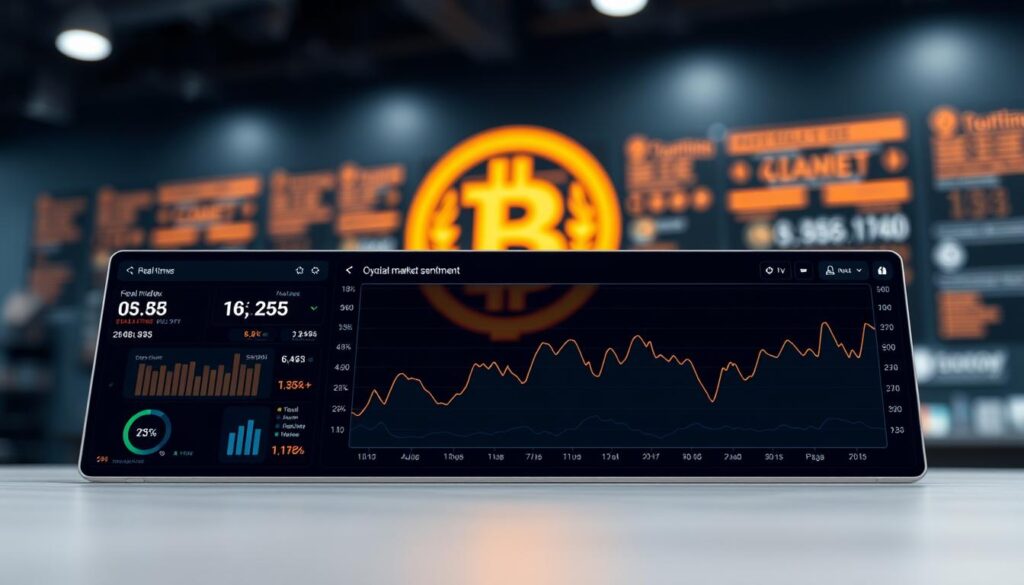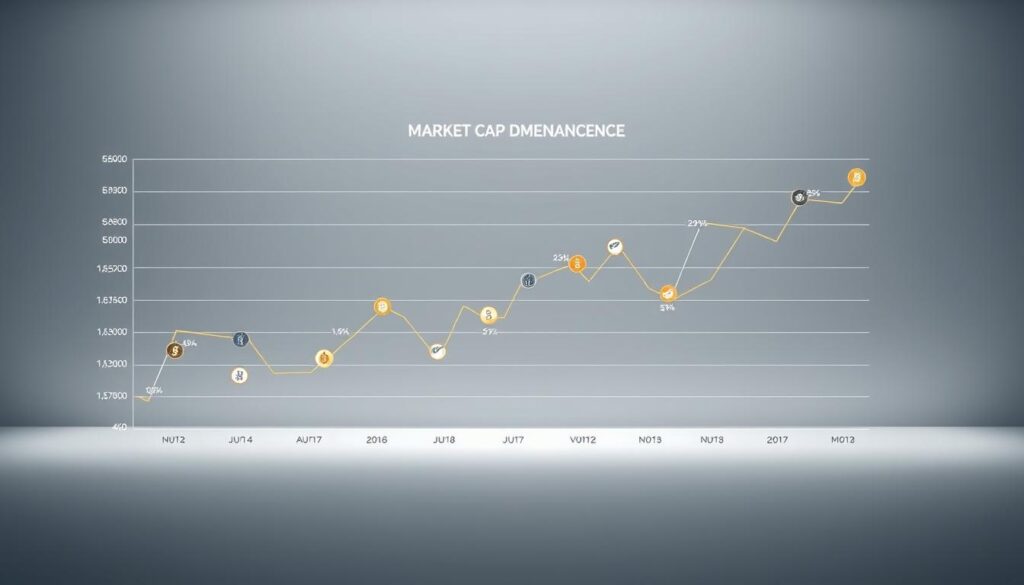Now Reading: Crypto Futures Trading Strategies and Market Insights
- 01
Crypto Futures Trading Strategies and Market Insights
Crypto Futures Trading Strategies and Market Insights
Digital asset derivatives have transformed how investors engage with cryptocurrency markets. These financial agreements allow participants to speculate on price movements or manage risk without holding actual tokens. Contracts are standardized across platforms like the Chicago Mercantile Exchange, ensuring consistent terms for expiration dates and sizes.

Unlike purchasing coins directly, these agreements create binding obligations to buy or sell at set prices. This structure appeals to both individual speculators and institutions seeking exposure to digital assets. Leading exchanges such as Binance and Kraken now offer advanced tools, making these instruments accessible to a broader audience.
Markets for Bitcoin, Ethereum, and other cryptocurrencies feature distinct contract specifications. The standardized format promotes liquidity, enabling seamless entry and exit positions. Whether aiming to profit from volatility or protect existing holdings, these tools provide flexible solutions for modern investors.
Key Takeaways
- Contracts track cryptocurrency values through binding agreements rather than direct asset ownership
- Standardized terms across exchanges ensure transparent pricing and expiration timelines
- Platforms like CME Group and Bybit offer specialized tools for risk management strategies
- Investors leverage these instruments for both short-term speculation and long-term hedging
- Multiple digital assets including Solana and XRP have unique contract parameters
Introduction to the World of Crypto Futures Trading
Traders can now engage with digital currencies through binding agreements rather than direct purchases. These financial instruments allow participants to speculate on price movements while avoiding the complexities of holding actual assets. Platforms like Binance and Kraken have simplified access, attracting both individual and institutional investors.
Defining the Contract-Based Approach
This method revolves around legally binding agreements between buyers and sellers. Participants agree to exchange specific cryptocurrencies at predetermined prices and dates. Unlike spot markets, these contracts don’t require physical ownership, reducing security risks and storage concerns.
Why Newcomers Should Consider This Path
Beginners benefit from features like leverage, which amplifies potential gains with smaller capital. Markets operate 24/7, matching the global nature of digital assets. Demo accounts and educational materials on platforms like Bybit help users practice risk-free. Additionally, regulated environments offer more protection compared to traditional exchanges.
Understanding Crypto Futures Trading Contracts
At the core of derivative markets lie binding agreements that dictate transaction specifics. These standardized arrangements outline precise obligations for buyers and sellers, creating predictable frameworks for market participation. Let’s break down their architecture and how digital assets influence their behavior.

Structure of a Futures Contract
Every agreement contains four non-negotiable elements. The underlying asset determines what’s being exchanged, like Bitcoin or Ethereum. Contract size specifies quantities – for instance, one Bitcoin agreement might represent 5 BTC.
Expiration dates set settlement timelines, often aligning with month-end cycles. Predetermined prices lock in values upfront, shielding participants from sudden market swings. This uniformity allows seamless trading across platforms like CME Group.
How Underlying Assets Shape the Market
An asset’s volatility and liquidity directly impact agreement dynamics. Stablecoins generate less price uncertainty than emerging tokens like Solana. High-volume assets such as XRP typically have tighter bid-ask spreads.
Market capitalization also plays a role. Established coins attract more institutional interest, fostering deeper liquidity pools. Traders analyze these factors when selecting contracts matching their risk tolerance and strategic goals.
Exploring Leverage, Risk, and Margin in Futures Markets
Market participants utilize powerful financial tools to enhance their strategies while navigating potential pitfalls. These mechanisms require careful balancing to maximize opportunities without exposing accounts to excessive danger.
The Role of Leverage in Amplifying Positions
Leverage acts as a financial multiplier, letting traders control positions larger than their initial capital. For instance, 10x leverage allows managing a $10,000 position with just $1,000. This magnification works both ways – gains and losses expand proportionally to the leverage ratio.

Managing Risks and Margin Requirements
Margin serves as the security deposit needed to open positions. Exchanges calculate it as a percentage of the total contract value. If prices move against a trader’s position, platforms issue margin calls requiring additional funds or automatic liquidation.
Three critical practices help mitigate risks:
- Setting stop-loss orders to limit potential losses
- Maintaining buffer funds beyond minimum margin requirements
- Regularly monitoring positions during volatile market phases
Successful traders combine these tactics with disciplined derivatives strategies to protect capital while pursuing growth opportunities. Understanding these interconnected elements forms the foundation for sustainable participation in leveraged markets.
Different Types of Crypto Futures Products
Contract sizes vary dramatically to accommodate different investment goals and account sizes. Major exchanges now offer scaled versions of popular agreements, creating opportunities for both large institutions and individual participants.

Standard vs. Micro Futures Explained
Standard contracts cater to professional traders managing substantial capital. For example, one Bitcoin agreement equals 5 BTC – worth $200,000 at $40,000 per coin. These products dominate platforms like CME Group, offering high liquidity for rapid execution.
Micro versions replicate price movements at 1/50th the size. A 0.10 BTC contract requires just $4,000 at current prices, enabling precise strategic positions without overexposure. This flexibility helps newcomers test strategies with minimal risk.
Insights into Bitcoin, Ether, Solana, and XRP Futures
Ether agreements follow similar scaling. Standard 50 ETH contracts contrast with micro 0.1 ETH versions. Newer assets like Solana and XRP show growing demand – their micro contracts (25 SOL and 2,500 XRP) help traders diversify portfolios.
All products share uniform expiration cycles and nearly 24/7 access. This consistency allows combining multiple assets into cohesive strategies while managing capital efficiently.
Choosing the Right Crypto Futures Trading Platform for Beginners
Selecting a reliable exchange shapes your entire journey in derivative markets. Beginners need environments that balance robust features with intuitive design, ensuring both safety and strategic flexibility.
Key Features to Look For
Security protocols form the foundation of trustworthy platforms. Look for exchanges offering two-factor authentication and cold storage for digital assets. Insurance coverage adds extra protection against potential breaches.
High liquidity ensures smooth order execution – platforms like Binance handle billions in daily volume. Transparent fee structures matter too. Some services offer discounts for active traders, while others use flat rates for simplicity.
Three elements accelerate learning curves:
- Demo accounts with virtual funds
- Educational libraries covering market analysis
- Customizable dashboards with real-time charts
Security and Liquidity Considerations
Established platforms like Kraken prioritize regulatory compliance across jurisdictions. Geographic restrictions apply in some regions – always verify local laws before creating an account.
Liquidity metrics reveal how easily you can enter/exit positions. High-volume exchanges minimize price slippage during volatile periods. Combine this with responsive customer support for urgent issues.
Automation tools streamline complex strategies. Bybit’s trading bots execute orders based on preset conditions, while Coinbase simplifies processes for first-time users. Always test features through paper trading before committing real capital.
Developing Effective Crypto Futures Trading Strategies
Mastering digital asset markets requires adaptable approaches that align with price behavior. Strategic planning helps participants capitalize on upward surges and downward shifts while managing exposure. Let’s explore proven methods for navigating these dynamic environments.
Long and Short Trading Approaches
Bullish positions involve buying contracts anticipating value increases. This works well during positive news cycles or technological advancements. Conversely, bearish moves profit from declining prices through timed sales, often used during market corrections.
Trend-Following and Breakout Techniques
Tracking momentum with tools like 50-day moving averages helps identify sustained movements. Breakouts occur when values push beyond established barriers, signaling potential rallies or drops. Combining volume analysis with these patterns increases confirmation accuracy.
Successful participants balance technical indicators with risk controls. Stop-loss orders and position sizing prevent single trades from derailing portfolios. Demo accounts on platforms like Binance allow strategy testing without financial commitment, building confidence before live execution.
FAQ
What advantages do derivatives offer new participants?
Derivatives allow beginners to hedge existing holdings or speculate on price shifts without owning the actual asset. They also provide access to leverage, enabling smaller capital to control larger positions.
How do asset prices influence contract terms?
The value of the underlying asset directly determines contract size and settlement details. Volatile assets may have shorter expiration dates to account for rapid price changes.
Can leverage lead to unexpected outcomes?
Yes, while leverage magnifies potential gains, it equally amplifies losses. Traders should use stop-loss orders and monitor positions closely to avoid liquidation.
What distinguishes standard from micro contracts?
Standard contracts represent larger asset quantities, suitable for experienced traders. Micro contracts allow smaller investments, reducing risk exposure for newcomers.
Which features matter most when selecting a platform?
Prioritize platforms with intuitive interfaces, real-time data, and educational resources. Security measures like two-factor authentication and cold storage are essential for protecting funds.
How do long and short approaches differ in execution?
Going long involves buying contracts expecting price rises, while shorting sells contracts anticipating declines. Both strategies require analyzing market trends and timing entries carefully.
Why is liquidity critical in derivatives markets?
High liquidity ensures tight bid-ask spreads and faster order execution. It minimizes slippage, especially during volatile periods when entering or exiting positions.
How do trend-following strategies work?
These techniques involve identifying sustained price movements using indicators like moving averages. Traders enter positions in the direction of the trend, aiming to capture momentum shifts.
What role do margin requirements play in risk management?
Margin acts as a collateral buffer against potential losses. Higher margin ratios lower leverage but reduce liquidation risks, balancing opportunity and safety.
How do market events impact short-term positions?
News like regulatory updates or macroeconomic shifts can cause sudden volatility. Traders using short-term strategies must stay informed and adjust stops or take-profit levels accordingly.













